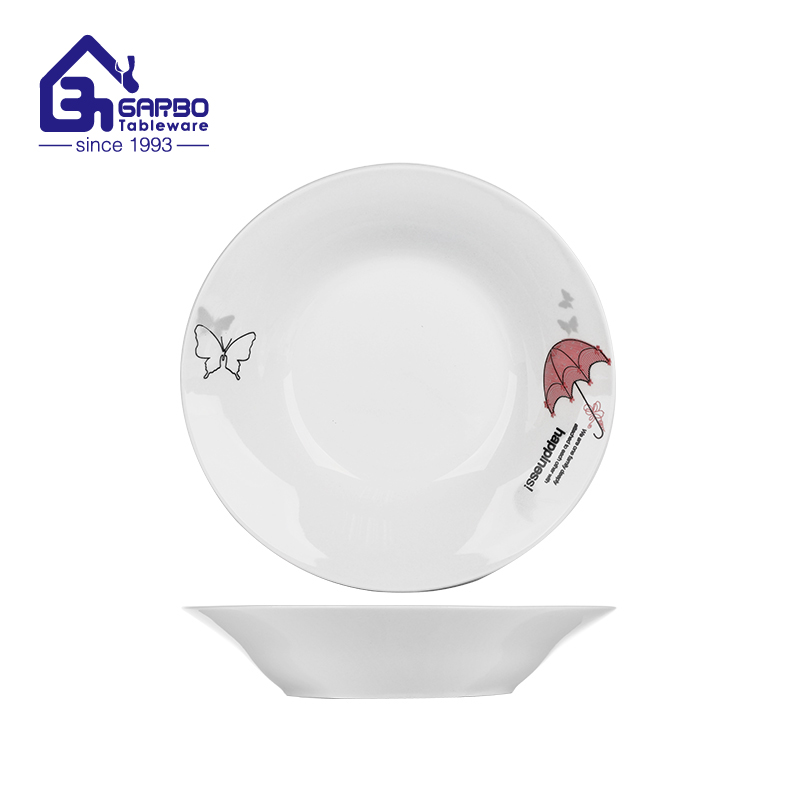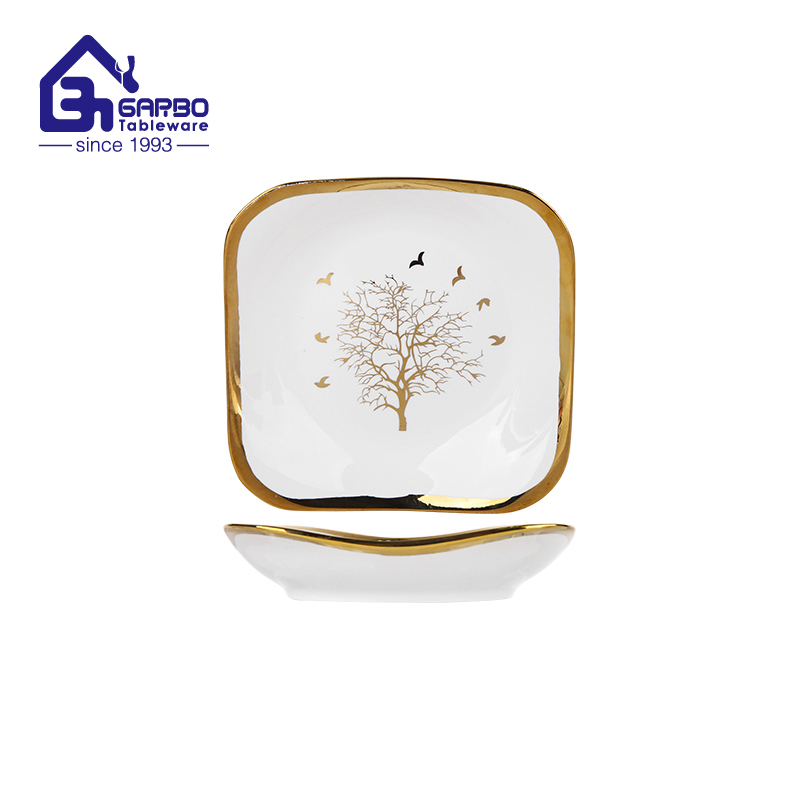Pulished on Aug. 15, 2025
As a manufacturer of ceramic tableware, many customers often ask us, “I really like the decal pattern on this glass plate. Can you put it on a ceramic plate?”
Technically speaking, this is possible, but not all decal patterns on glass can be directly applied to ceramic plates. There are two main reasons for this: first, glass and ceramic have different material properties; second, the decals themselves have different heat resistance.
Due to differences in chemical composition and physical structure, glass and ceramics require different firing temperatures. Glass production generally requires temperatures between 500°C and 800°C, while ceramics are fired at high temperatures, generally between 800°C and 1200°C. This means that decals used on ceramics must be able to withstand much higher temperatures than those used on glass.

Decals are classified according to the firing temperature they can withstand, with each type corresponding to a specific material:
Low-temperature decals (500°C–600°C): These decals are commonly used on glass plates, as glass cannot withstand high temperatures. They are also suitable for new bone china flat plates and bone china plates, which are ceramics with lower glaze firing temperatures (approximately 1150°C–1250°C).
Medium-temperature decals (700°C–900°C): Designed specifically for medium-to high-temperature firing of ceramics, such as 10-inch stoneware dinner plates or certain types of high-strength porcelain. The pigments and adhesives can withstand high temperatures and bond firmly to the ceramic glaze.
High-temperature decals (1100°C–1250°C and above): For example, magnesium-based porcelain and most reinforced porcelain. It can withstand the high temperatures of ceramic firing and permanently fuse with the glaze. The patterns on these decals are highly wear-resistant and chemically stable, so they are often used on everyday tableware, which can withstand repeated use and washing.

Therefore, to transfer glass decals onto ceramic plates, the key is to ensure that the heat resistance of the decals matches the firing temperature of the ceramic. Most glass decals are low-temperature types and are not suitable for high-temperature firing of ceramics. Therefore, not all glass decals can be directly used on a porcelain plate; they may need to be redesigned to meet the specific temperature requirements of the ceramic.
To ensure the desired outcome, it is recommended to consult a professional ceramic manufacturer first, create samples before mass production, and confirm the results. This approach can effectively avoid unnecessary losses.